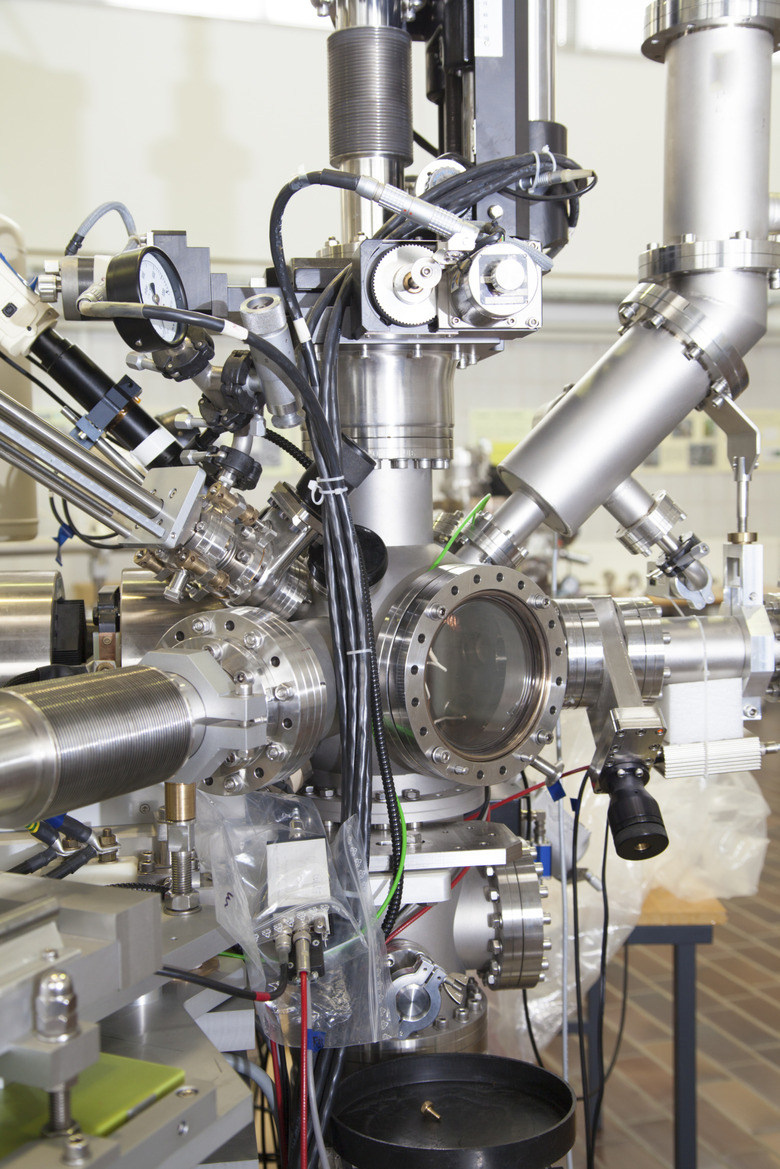Types Of Spectrometers
Spectrometers are scientific instruments, used to identify or confirm the chemical species, chemical structure or concentration of substances in a sample. There are many types of spectrometers, with many possible variations and modifications that can specialize or extend the usefulness of an instrument. In most cases, a sample submitted to spectrometric analysis must be quite pure to avoid confounding results.
Matter and Energy
Matter and Energy
Spectrometry is based on interactions between matter and energy. A sample stimulated with a specific kind of energy will respond in a way that is characteristic of the sample. Depending on the method, a sample responds to an energy input by absorbing energy, releasing energy or perhaps even by undergoing a permanent physical change. If a sample gives no response in a particular instrument, there is information in that result as well.
Colorimeters
Colorimeters
In a colorimeter, a sample is exposed to a single wavelength of light, or is scanned with many different wavelengths of light. The light is in the visible band of the electromagnetic spectrum. Colored liquids reflect, transmit (let pass) or absorb different colors of light to different degrees. Colorimetry is useful for determining the concentration of a known substance in solution, by measuring a sample's transmittance or absorbance at a fixed wavelength and comparing the result to a calibration curve. A scientist produces the calibration curve by analyzing a series of standard solutions of known concentration.
UV Spectrometers
UV Spectrometers
Ultraviolet (UV) spectroscopy works on a principle similar to that of colorimetry, except it uses ultraviolet light. UV spectroscopy is also called electronic spectroscopy, because the results depend on the electrons in the chemical bonds of the sample compound. Researchers use UV spectrometers to study chemical bonding and to determine the concentrations of substances (nucleic acids for example) that do not interact with visible light.
IR Spectrometers
IR Spectrometers
Chemists use infrared (IR) spectrometers to measure the response of a sample to infrared light. The device sends a range of IR wavelengths through the sample to record the absorbance. IR spectroscopy is also called vibrational or rotational spectroscopy because the vibrational and rotational frequencies of atoms bonded to each other, are the same as the frequencies of IR radiation. IR spectrometers are used to identify unknown compounds or to confirm their identity since the IR spectrum of a substance serves as a unique "fingerprint."
Atomic Spectrometers
Atomic Spectrometers
Atomic spectrometers are used to find the elemental composition of samples and to determine the concentrations of each element. There are two basic types of atomic spectrometers: emission and absorbance. In either case a flame burns the sample, breaking it down into atoms or ions of the elements present in the sample. An emission instrument detects the wavelengths of light released by the ionized atoms. In an absorbance instrument, light of specified wavelengths passes through the energized atoms to a detector. The wavelengths of the emissions or absorbances are characteristic of the elements present.
Mass Spectrometers
Mass Spectrometers
Mass spectrometers are used to analyze and identify the chemical structure of molecules, especially large and complex ones. A sample is injected into the instrument and ionized (either chemically or with an electron beam) to knock off electrons and create positively charged ions. Sometimes the sample molecules are broken into smaller ionized fragments in the process. The ions are passed through a magnetic field, causing the charged particles to follow a curved path to strike a detector at different locations. Heavier particles follow a different path than lighter ones, and the sample is identified by comparing the result to those produced by standard samples of known composition.
References
- Fundamentals of Analytical Chemistry; Douglas A. Skoog, Donald M. West, and F. James Holler; 1988
- University of California: Spectrometer
Cite This Article
MLA
McIntosh, Philip. "Types Of Spectrometers" sciencing.com, https://www.sciencing.com/types-spectrometers-5444167/. 24 April 2017.
APA
McIntosh, Philip. (2017, April 24). Types Of Spectrometers. sciencing.com. Retrieved from https://www.sciencing.com/types-spectrometers-5444167/
Chicago
McIntosh, Philip. Types Of Spectrometers last modified August 30, 2022. https://www.sciencing.com/types-spectrometers-5444167/
